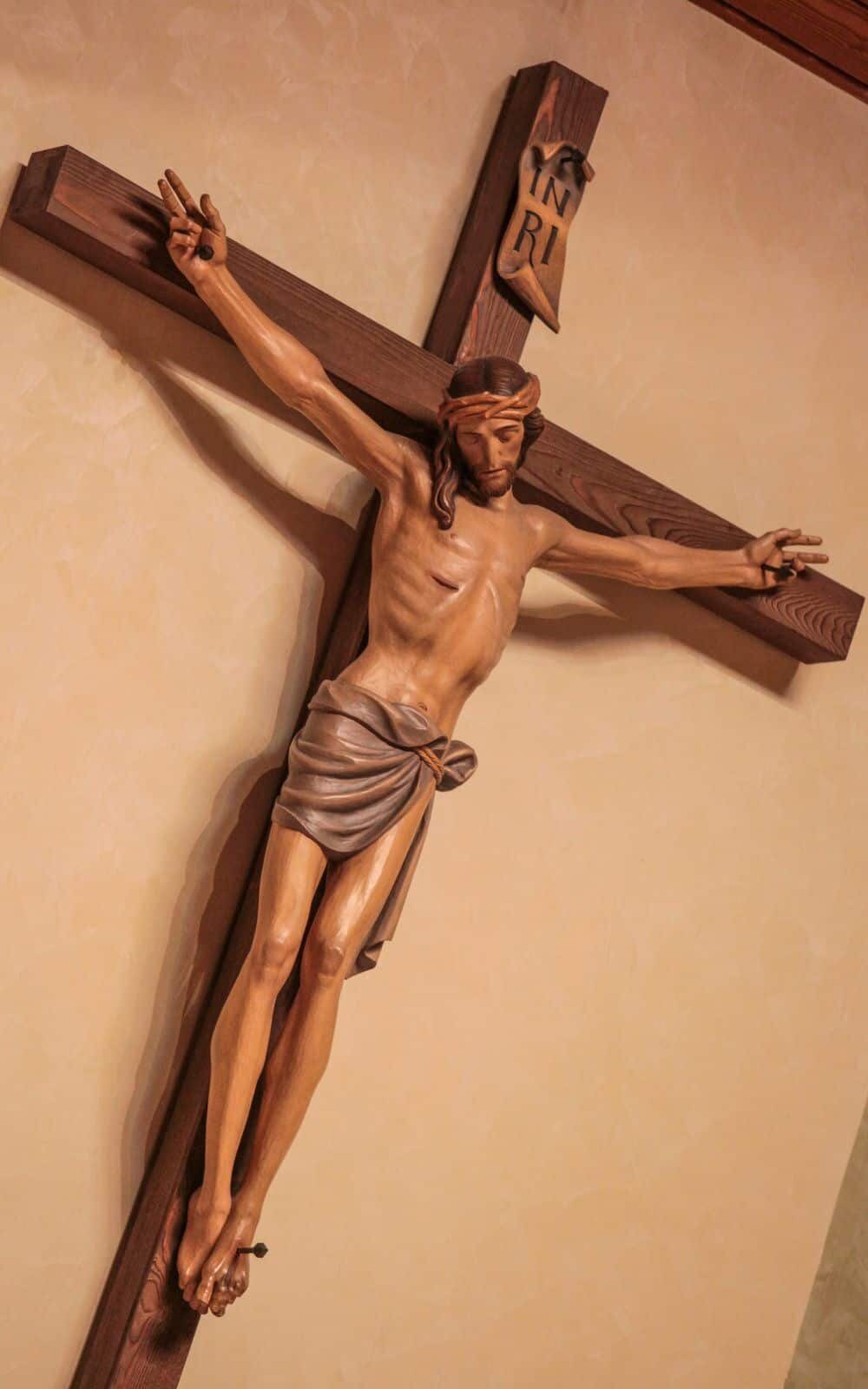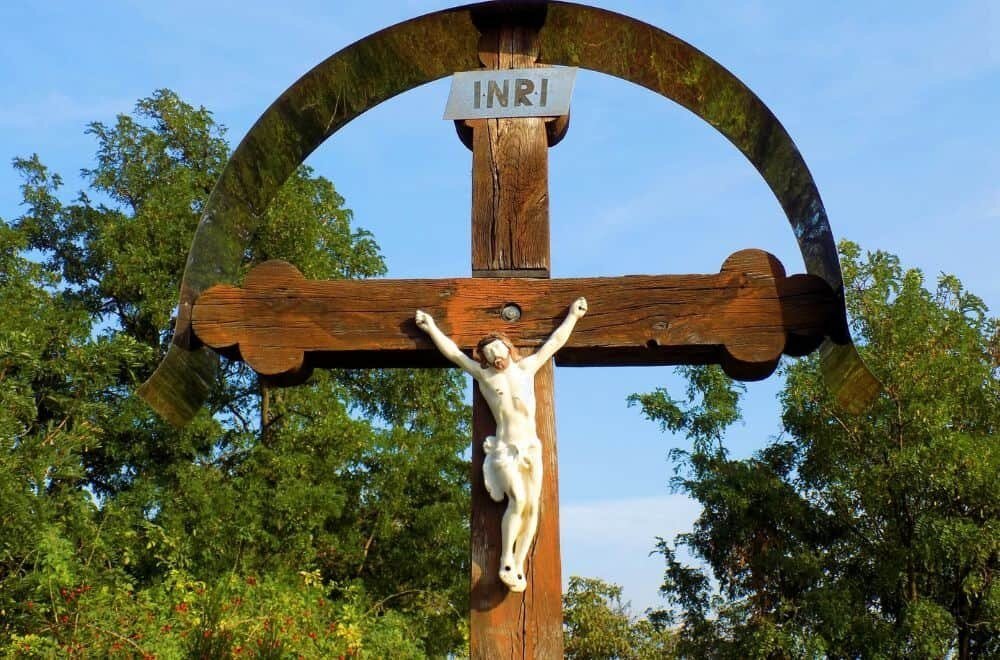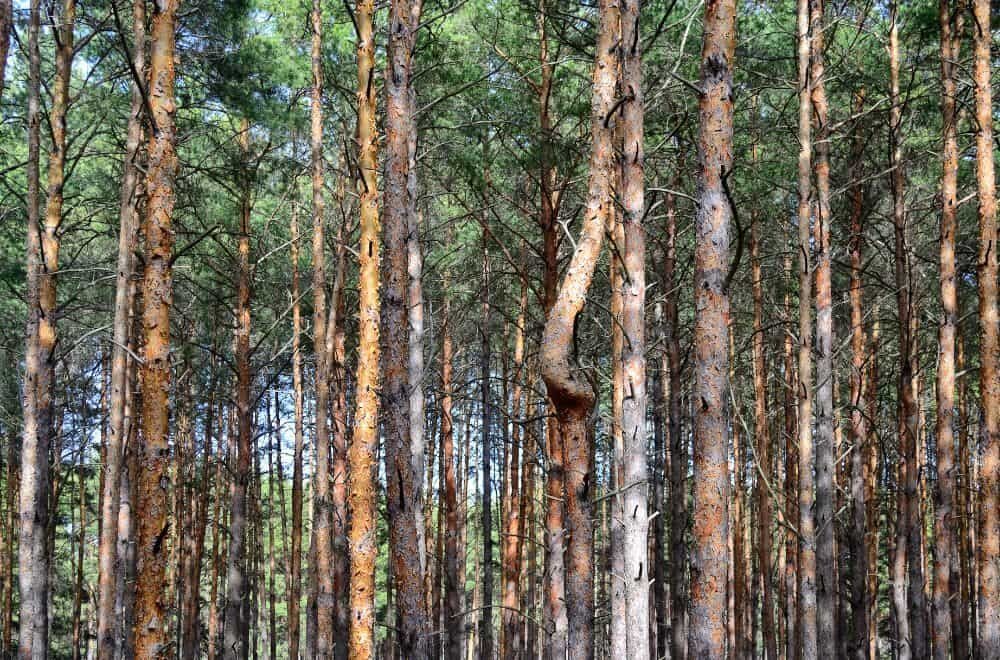If you’ve ever wondered what kind of wood Christ’s cross was made of, you’re not alone. This question has been asked for centuries, and the answer is not entirely clear. According to some historical accounts, the cross was made of a single piece of wood, while others suggest that it was made of multiple types of wood.
One of the most common beliefs is that the cross was made of cedar wood. This is based on the fact that cedar was a common wood in the region where Christ was crucified, and it was also used in the construction of the Temple in Jerusalem. However, there is no definitive proof that cedar was used in the construction of the cross.
Another theory is that the cross was made of olive wood. This is based on the fact that olive trees were common in the region, and that the wood was known for its strength and durability. However, like the cedar theory, there is no definitive proof that the cross was made of olive wood.
Historical Context
When discussing the wood of Christ’s cross, it is important to understand the historical context of Roman crucifixion practices and common woods used in Roman times.
Roman Crucifixion Practices
Crucifixion was a common form of execution in the Roman Empire, used for slaves, rebels, and criminals. It was a brutal and torturous death, designed to be a public spectacle and a warning to others. The victim was typically stripped naked, beaten, and then forced to carry the horizontal beam of the cross, called the patibulum, to the place of execution.
Once there, the victim’s hands and feet were nailed to the vertical post, called the stipes, and the cross was raised and secured into the ground. Death usually came from a combination of suffocation, shock, and dehydration, and could take hours or even days.
Common Woods Used in Roman Times
The type of wood used for crucifixion varied, depending on the availability and cost. According to historical records, some of the most common woods used in Roman times included:
- Pine
- Cedar
- Cypress
- Oak
- Fir
Pine was the most commonly used wood for crucifixion, due to its availability and low cost. It was also lightweight, making it easier to transport and erect the cross. However, other woods were used as well, depending on the region and the availability of resources.
It is unclear what type of wood was used for Christ’s cross, as historical records do not provide a definitive answer. However, it is likely that it was made from a common wood, such as pine or cedar.
Biblical Evidence

The Bible does not give a clear answer to the question of what wood was used to make the cross of Christ. However, there are a few clues that can help us narrow down the possibilities.
Firstly, we know from the Gospel accounts that Jesus was crucified outside the city walls of Jerusalem (John 19:20). This suggests that the wood used for the cross may have been sourced locally, as it would have been difficult to transport a large piece of wood over a long distance.
Secondly, the Gospel of Matthew tells us that the soldiers who led Jesus away to be crucified “seized a man, Simon of Cyrene, who was coming from the country, and laid on him the cross, to carry it behind Jesus” (Matthew 27:32). This implies that the cross was likely made of a type of wood that was strong and durable enough to support the weight of a man.
Finally, the Gospel of John mentions that Jesus carried his own cross to the place of crucifixion (John 19:17). This suggests that the cross may have been made of a type of wood that was not too heavy or cumbersome for a person to carry.
Taking these clues into consideration, it is possible that the cross of Christ was made of a type of wood that was common in the region at the time, such as olive wood, acacia wood, or even cedar wood. However, without further evidence, it is impossible to say for certain what type of wood was used.
Scientific Analysis

Archaeological Findings
While there is no definitive answer to what wood Christ’s cross was made of, archaeological findings provide some clues. In 2003, a team of archaeologists discovered a first-century tomb in Jerusalem that contained a fragment of a crucifixion nail. The nail was identified as being made of iron, which suggests that the cross was made of a durable wood that could withstand the weight of a human body.
Other archaeological evidence suggests that the cross was likely made of a common wood, such as pine. In the 19th century, Charles Rohault de Fleury, a noted architect, researched the relics of the cross and concluded that it was made of pine. However, it is important to note that this is just one theory and has not been definitively proven.
Forensic Studies
Forensic studies have also been conducted to try to determine what wood Christ’s cross was made of. In 2010, a team of Italian scientists analyzed the particles found on the Shroud of Turin, which is believed by some to be the burial cloth of Jesus. The scientists found traces of several plants, including a species of pine that grows in the Middle East.
While this evidence is not conclusive, it does suggest that the cross may have been made of pine. It is important to note, however, that the Shroud of Turin is a controversial artifact, and its authenticity has been questioned by many scholars.
In conclusion, while there is no definitive answer to what wood Christ’s cross was made of, archaeological and forensic evidence suggests that it may have been made of a durable wood such as pine. However, it is important to remember that these findings are not conclusive and that the true nature of the cross may never be known for certain.
Theological Perspectives

When it comes to the wood of Christ’s cross, there are several theological perspectives that have been presented throughout history. Here are a few of them:
- The Four Woods Theory – According to this theory, the cross was made up of four different types of wood: cypress, cedar, pine, and box. This theory is based on the writings of Venerable Bede and John Cantacuzenus.
- The Trinity Tree Theory – This theory suggests that the cross was made from a trinity of trees, specifically cedar, cypress, and pine. These trees were united in one trunk, and Moses is said to have cut his rod from this tree.
- The Dogwood Theory – This theory is based on a legend that says the cross was made from dogwood. According to the legend, the dogwood tree was once tall and strong, but after it was used to make the cross, it became small and weak. The legend also states that the dogwood’s flowers now have the shape of a cross, with two long petals and two short ones.
From a theological perspective, the most important aspect of the wood of the cross is what it represents. The cross is a symbol of Christ’s sacrifice and the redemption of humanity. It is a reminder that Christ died for our sins and that through his death, we have the opportunity for eternal life.
As Christians, we are called to reflect on the meaning of the cross and to live our lives in a way that honors Christ’s sacrifice. Whether the cross was made from cypress, cedar, pine, or dogwood is ultimately unimportant. What matters is that we recognize the significance of the cross and strive to follow in Christ’s footsteps.
Popular Beliefs and Traditions

When it comes to the wood of Christ’s cross, there are several popular beliefs and traditions that have been passed down through the ages. Here are a few of them:
- Pine wood: According to the Catholic Encyclopedia, by the 19th century, it was widely accepted that the cross was made of pine wood. This belief was based on the work of Charles Rohault de Fleury, a noted architect who researched the relics of the cross and wrote “Mémoire sur les instruments de la Passion” in 1870.
- Four types of wood: The Venerable Bede and John Cantacuzenus both recorded the idea that the cross was composed of four types of wood: cypress, cedar, pine, and box. This belief is still held by some today.
- Olive wood: Another popular belief is that the cross was made of olive wood. This belief is based on the idea that olive wood was commonly used for construction during the time of Christ.
- No one knows for sure: Of course, it’s also possible that no one knows for sure what type of wood the cross was made of. The True Cross, the purported remains of the actual cross on which Jesus was crucified, has been lost to history, so there is no way to definitively determine what type of wood it was made of.
Despite the lack of concrete evidence, the wood of Christ’s cross remains an important symbol in Christianity, representing the ultimate sacrifice that Jesus made for humanity.
Contrasting Views

When it comes to the question of what wood Christ’s cross was made of, there are various contrasting views. Some people believe that the wood used for the cross was cedar, while others say it was cypress. There are also those who believe that the cross was made of pine, and still others who hold that it was made of boxwood.
One theory suggests that the cross was made of olive wood, as this was the most commonly used wood in the region at the time. Another theory is that the cross was made of acacia wood, which was used in the construction of the Ark of the Covenant.
Some scholars argue that the type of wood used for the cross is not important, as the focus should be on the significance of the cross itself rather than the material it was made of. They point out that the cross is a symbol of sacrifice and redemption, and that its meaning transcends the physical properties of the wood.
Regardless of the type of wood used, it is clear that the cross is a powerful symbol of faith and devotion for Christians around the world. Whether you believe that it was made of cedar, cypress, pine, or boxwood, its message of love and sacrifice remains as relevant today as it did 2,000 years ago.
Frequently Asked Questions
What type of wood was traditionally used to make crosses in ancient times?
In ancient times, crosses were typically made from a variety of woods, including olive, cypress, cedar, pine, and fir. However, the specific type of wood used for Christ’s cross is not definitively known.
Why is the cross such a powerful symbol in Christianity?
The cross is a powerful symbol in Christianity because it represents the sacrifice that Jesus Christ made for humanity. His death on the cross is seen as the ultimate act of love and redemption, and the cross itself has become a symbol of hope and salvation.
What does the Bible say about the wood used for Christ’s cross?
The Bible does not provide any specific information about the type of wood used for Christ’s cross. However, it does describe the events leading up to his crucifixion and the significance of his sacrifice.
Are there any legends or stories about the wood of Christ’s cross?
There are many legends and stories about the wood of Christ’s cross, including tales of miraculous healing powers and the discovery of the cross by Saint Helena, the mother of Emperor Constantine. However, these stories are not supported by historical evidence.
What is the significance of the dogwood tree in relation to the cross?
According to legend, the dogwood tree was once a tall and sturdy tree that was used to make the cross on which Jesus was crucified. As a result of its role in the crucifixion, the tree was cursed and transformed into a smaller, weaker tree with blossoms that resemble the shape of a cross.
Is there any historical evidence to support the idea that Christ’s cross was made of a specific type of wood?
There is no historical evidence to support the idea that Christ’s cross was made of a specific type of wood. However, the tradition of using certain types of wood for crosses has been passed down through generations of Christians, and these woods are still commonly used in the construction of crosses today.